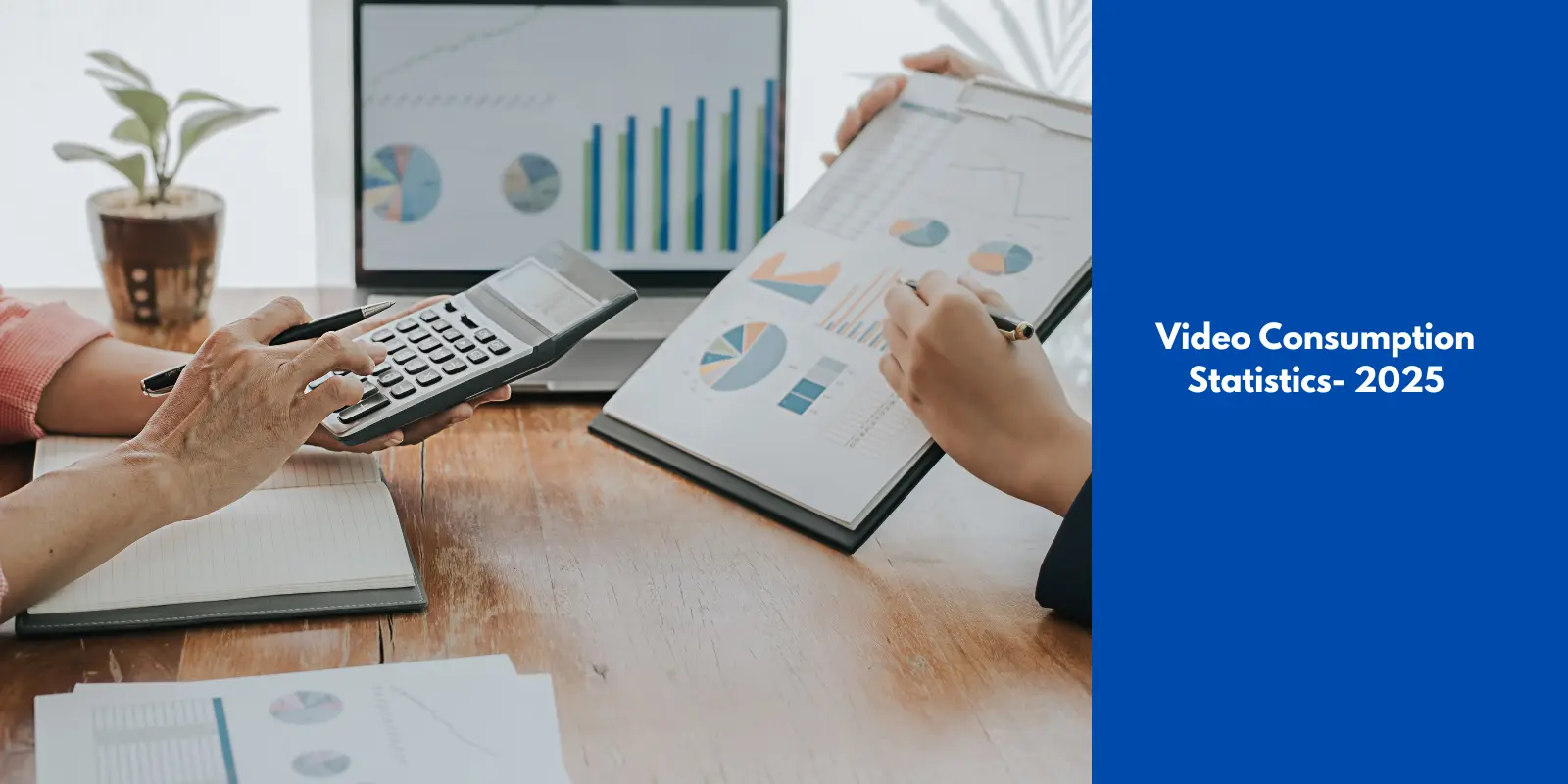You may think you know how the world consumes video, but the reality is often different from what meets the eye. The ever-evolving landscape of video consumption is shaped by factors ranging from platform preferences to psychological triggers, making it essential for marketers, creators, and businesses to stay ahead of the curve.
In this article, you’ll uncover some surprising, counterintuitive, and essential video consumption statistics.
1. The Ubiquity of Video Consumption
- Over 82% of global internet traffic comes from video streaming and downloads, yet only 18% is attributed to web browsing. (Cisco Annual Internet Report, 2023)
- YouTube alone has more than 2.7 billion monthly active users , making it a synonym for online video itself. (Statista, 2024)
- Contrary to popular belief, silent videos drive up engagement rates by 70%, proving that visuals sometimes matter more than sound. (Facebook Business, 2023)
- The world spends an average of 17 hours per week watching online video content, a figure that has nearly doubled in the past five years. (Wyzowl, 2024)
- Video consumption on mobile devices has increased by 1000% since 2012, yet desktop video views still contribute 28% of total watch time. (Insider Intelligence, 2023)
2. Social Media and Video Preferences
- 85% of videos on Facebook are watched without sound, emphasizing the rise of captions and visual storytelling. (Facebook Business, 2023)
- TikTok users spend an average of 95 minutes per day on the platform, almost double the time spent on Instagram Reels. (Sensor Tower, 2024)
- Twitter (now X) videos receive 10x more engagement than tweets with only text or images, despite the platform not being synonymous with video consumption. (Twitter Analytics, 2023)
- Short-form videos (under 60 seconds) drive 50% more conversions than long-form videos across e-commerce platforms. (HubSpot, 2024)
3. Video Length and Engagement Rates
- The ideal length for a marketing video is 1 minute, with engagement rates dropping significantly after 2 minutes (Wistia, 2023)
- However, videos longer than 15 minutes on YouTube get 4x more watch time than shorter videos, highlighting the power of long-form storytelling. (YouTube Creator Insights, 2024)
- A paradox: while 80% of people prefer watching short-form videos, the most-watched YouTube video ever (“Baby Shark Dance”) is 2 minutes long (YouTube, 2024)
- Live videos hold audiences 3x longer than pre-recorded content, despite requiring real-time engagement. (Livestream by Vimeo, 2023)
4. Platform-Specific Insights
- YouTube Shorts generate 50 billion views per day , making it a major player in short-form video. (Google Earnings Report, 2024)
- Despite the rise of TikTok, YouTube remains the #1 platform for learning-based content, with over 70% of users going there to learn something new. (Pew Research Center, 2023)
- Twitch users collectively watched 6 billion hours of live streams in a single quarter, rivaling traditional TV consumption. (Streamlabs, 2024)
- The metonymy of “Netflix and chill” holds strong, as Netflix accounts for 8% of total video consumption worldwide. (Netflix Earnings Report, 2023)
- Amazon Prime Video’s watch time increased by 60% in the last two years, yet its total user base is half that of Netflix. (Statista, 2024)
5. Industry Trends and Future Projections
- By 2026, AI-generated videos will account for 30% of all online video content. (Gartner, 2024)
- 70% of marketers believe video outperforms all other content types in conversion rates, yet only 60% have a dedicated video strategy. (HubSpot, 2024)
- The 5-second rule applies: 90% of viewers decide whether to continue watching a video within the first 5 seconds. (Vidyard, 2023)
- With 5G adoption, mobile video consumption is expected to grow by 40% annually. (Ericsson Mobility Report, 2023)
6. The Psychology of Video Consumption
- 95% of video information is retained when watched, compared to only 10% when read. (Insivia, 2023)
- People are 2x more likely to share video content than any other type of content. (Social Media Today, 2024)
- The term “binge-watching” has evolved: 67% of Gen Z viewers now define it as watching multiple short videos in a row, rather than full TV seasons. (Deloitte Digital Media Trends, 2024)
7. Unexpected Behavioral Insights
- 40% of people prefer watching videos at 1.5x speed, challenging traditional pacing norms. (YouTube User Survey, 2024)
- The most-watched video category? “Oddly Satisfying” videos, racking up billions of views annually. (YouTube Trends Report, 2023)
- ASMR videos generate more engagement per view than music videos, despite being niche content. (Twitch & YouTube Analytics, 2024)
Final Takeaway
Your video consumption habits are likely shaped by subconscious behaviors, trends, and technological shifts. As platforms evolve and user preferences change, understanding these not-so-obvious statistics can help you leverage video content more effectively—whether you’re a content creator, marketer, or an avid viewer. The future of video is dynamic, and staying informed is your key to keeping up.
